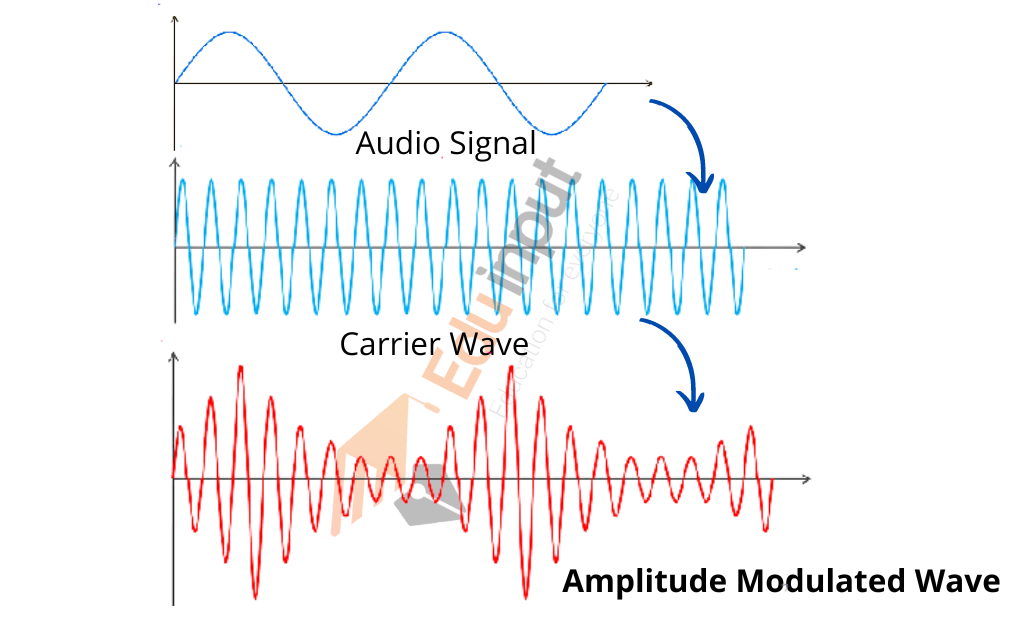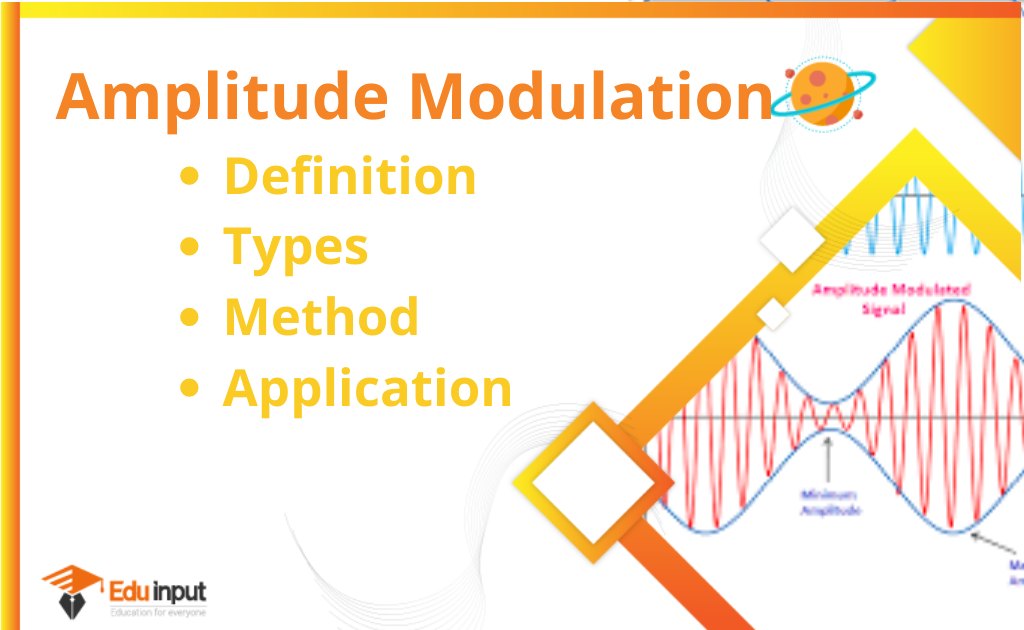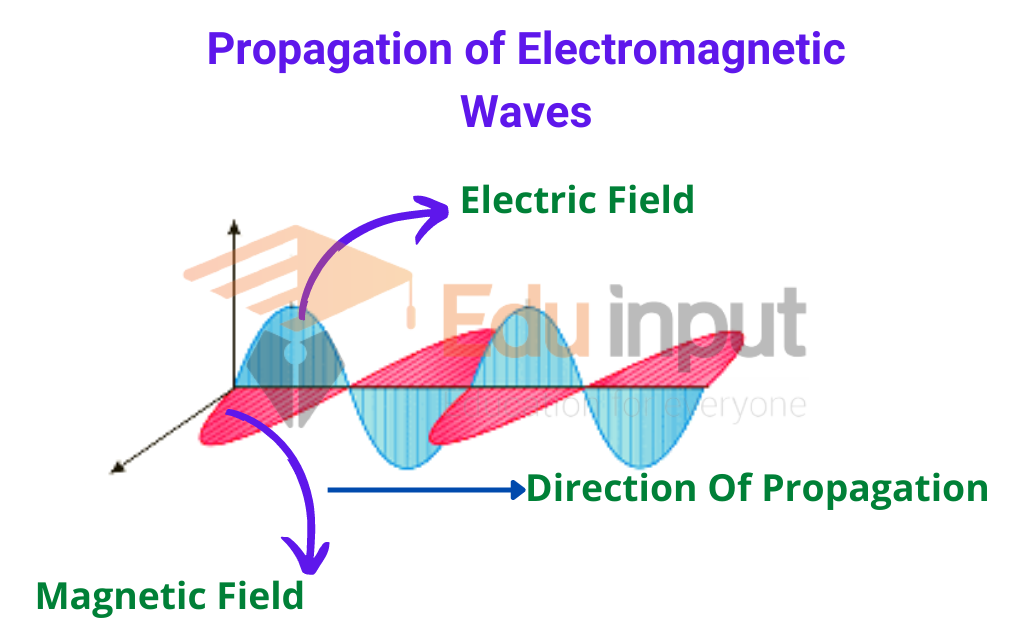Modulation-Types of Modulation
The process of combining the low-frequency signal with a high-frequency radio wave called carrier wave is called Modulation. The resultant wave is called a modulated carrier wave.
Modulation
It is the process of changing one or more characteristics of a periodic wave, called a carrier signal, with another signal, usually called a modulated signal that contains the information that is transmitted.
For example, the modulated signal can be an audio signal representing sound from a microphone, a video signal representing video from a video camera, or a digital signal representing a two-digit sequence that is a bit stream from a computer.
Carriers have a higher frequency than the modulated signal. In wireless communication, the modulated carrier wave is transmitted as radio waves to the wireless receiver via space.
Speech and music are transmitted hundreds of kilometers away from a radio transmitter. The picture taken by the TV camera is also sent to the viewer many kilometers away. The high-frequency radio waves are carriers for speech or pictures.
The information (light, sound, picture, or data) is impressed on radio waves. These waves carry this information at large distances.
This is the process of combining the low-frequency signal with a high-frequency radio wave called carrier waves. The low-frequency signal is known as the modulation signal.
It is achieved by changing the amplitude or the frequency of the carrier waves according to the modulating signal.
Types of Modulation
There are two types of modulation
- Amplitude modulation (AM)
- Frequency Modulation (FM)
Amplitude Modulation
In this modulation, the amplitude of the carrier wave is increased or decreased as the amplitude of the superposing modulated signal increases and decreases.
A high-frequency carrier wave of constant amplitude and frequency. A low or audio frequency signal of a sine waveform.

The result was obtained by modulating carrier waves with the modulating wave.
The AM transmission frequencies range from 540 kHz to 1600 kHz.
Frequency Modulation
In this type of modulation, the frequency of the carrier wave is increased or decreased as the modulating signal amplitude increases or decreases but the carrier wave amplitude remains constant.

The frequency of a modulated carrier wave is highest (point H) when the signal amplitude is at its maximum positive value and at its lowest frequency (point L) when the signal amplitude has a maximum negative value.
When the signal amplitude is zero, the carrier frequency is at its normal frequency f.
FM transmission frequencies are much higher and range between 88 MHZ to 108 MHZ FM radio waves are affected less by electrical interference than AM radio waves and hence provide a higher quality transmission of sound. However, they have a shorter range than AM waves and are less able to travel around obstacles such as hills and large buildings.







Leave a Reply